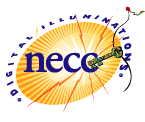NECC: Trends in Mobile Technology for K-16 Teaching and Learning
 Saturday, July 2, 2005 at 11:51AM
Saturday, July 2, 2005 at 11:51AM  On June 30, 2005 I had the pleasure of attending the NECC session Trends in Mobile Technology for K-16 Teaching and Learning, featuring the following experts:
On June 30, 2005 I had the pleasure of attending the NECC session Trends in Mobile Technology for K-16 Teaching and Learning, featuring the following experts:
Carolyn Staudt from Concord ConsortiumOrganized by Mark van't Hooft, panelists discussed their ideas and visions. I took some notes and summarized what I gleamed from each of the six panelists below. I gave each panelist's speech a title of my own.
Valerie Crawford from SRI International
Joe Barrus from AlphaSmart
Mark Yehle from SuccessLink
Jan Kelly from Mogador Elementary School
Elliot Soloway from GoKnow
Students Collecting Data Leads to Increased Learning
Carolyn Staudt's work has been focused around sensors. They have TEEMS research and the data shows an increase in students learning. The focus is "to increase the use of sensors and models in grades 3-8 science teaching to improve student understanding of science." They have developed curriculum for teachers that is standards driven. They will be tracking students based on data for two years. Their research shows 3%-19% higher scores on post-tests in the state of Missouri. The teachers were given an eight week online course in pedagogy, getting to know the tool, getting to know the content, and a student practicum. I bet without this eight week course, there might not have been any increase in test scores. Just giving teachers probes is certainly not enough.
Data Driven Vision of the Future
Valerie Crawford presented a vision of the future. Her focus is on the teacher and the teachers' needs and she has lots of statistics to cite. She flashed a title for her seven minute speech: Technology for Teaching: What's Coming. Right now since technology is piecemeal, the information technology revolution has not yet occurred for teaching. Using technology is pretty cumbersome for teachers to use right now. There's not interaction between technology and no workflow or performance support. She showed a photo of air traffic control in the 1950s and a classroom in the 1950s. Technology has transformed air traffic control so much that the air traffic control room looks very different. However, the photo of the classroom really isn't much different than classrooms today. She sees the future as teachers being able to instantly access student information with anytime, anywhere data driven decision-making. This data and technology will allow for individual instruction and be easy for the teacher to manage. Valerie wants to see real-time data driven decision so it can affect outcomes, not just look retrospectively at student performance. In order to get real-time data, each student will need a wireless computing device that can send data to the teacher's computer for analysis. Sounds like the perfect job for handhelds! But, I don't think the hardware or software is quite ready for this task today (that's why it's Valerie's vision of the not-so-distant future).
Sales Pitch for the "AlphaSmart Advantage"
According to Joe Barrus, AlphaSmart envisions a variety of devices used in the classroom. AlphaSmart products don't replace current technology, but it is a piece of the puzzle for using the appropriate tool for the task at hand. AlphaSmart keeps it simple and designed for multiple students because of budget constraints. AlphaSmart Neos and Danas are ruggedly designed to take a fall from a six-foot drop. Joe's speech felt more like a sales pitch than a discussion of the current trends. One thing that wasn't a sales pitch, was when Joe shared the fact that research shows students write more and go through more revisions when they use a handheld with a keyboard.
State-Wide Rollout Done Right
Mark Yehle is fondly called the "Techno-Geezer" in the office, perhaps, due in part, to his age relative to others. Mark directs SucessLink, which is a state agency that shares best practices with schools in Missouri. They have many lessons plans on their site. But once they were lead into the instructional technology arena, SuccessLink became interested in handheld computing. Several SuccessLinkers visited my fifth grade classroom at Willowdale in 2002 and watched the kids have access to a computer where and when they needed it. Mark pointed out that SuccessLink is routinely seeing handheld-using students doubling the amount they are writing and making gains in reading. Mark also notes that kids working together is a common observation. Missouri schools are getting handhelds from their own funds, not grants. Some schools in Missouri are buying handhelds instead of buying books! When schools are spending their own money, you know they feel it's important! Dr. Yehle says that the challenge is that the top 5% of teachers are unstoppable with handhelds, but when it's given to an entire grade level, many teachers need to be brought up to speed and need much more support. They need to understand handheld computing supports their curriculum; it's not another thing to add-on. In closing, Mark encouraged people to visit the new site ihandhelds.org – International Handheld Computer Association. It will be home to ISTE's handheld Special Interest Group that official begins in October 2005.
Inquiry with Technology
Jan Kelley has taught for 20 years and currently teaches fifth grade at Mogadore Elementary School in Ohio. Jan received grants that allowed her to get some great technology in the classroom. She was part of the PEP grant program in 2001 that gave her a class set of Palm IIIc's and keyboards. She now apparently uses AlphaSmart Danas too. Jan put a photo of a student using a handheld and keyboard on the screen with the caption "Now you see it." Then on the next slide, the student is gone and you see a group of students working together without the technology with the caption "Now you don't." I think the point was to show that technology is used when needed, but doesn't take over the classroom. Jan explained that handhelds helped with differentiation to for students with different learning styles and needs. Jan sees technology as the key to accomplishing differentiation. Also, she worries about the isolation of technology skills. In her vision of what her classroom might be in 3 to 10 years, she wants wireless connectivity in her room. She wants new handhelds but worries about where the money will come from to make that happen. She wants to see teachers move away from skills and drill and move to inquiry learning.
Price & Research Aside, Convince Others by Seeing Students in Action
Dr. Elliot Soloway said in 2001 that handhelds are about the cost of a pair of tennis shoes. About $100 will get the job done, of course $400 handhelds are better. Changing education by giving each child a computer is well within our reach. All of the studies coming out are showing increased learning when using handhelds. Dr. Soloways notes there are all kinds of new devices coming out. Including the Nova 500 with a 7 inch screen. They can make this cheap because it is the same screen mass-produced for portable DVD players. Instead of palm-sized computer, we're going to see hand-sized computers. Other trends Elliot foresees are extremely inexpensive handhelds, wireless connectivity, and larger screens (though these trends may not overlap each other). Items like flashdrives have crossed the "chasm" of early adopters to the mainstream markets. Soloway explains handhelds aren't there yet. When people see a student with a handheld, they are sold on using them in schools. The moment Elliot witnessed this (probably circa 1999), he dropped everything and focused on getting handhelds in education. Elliot says that many don't see a handheld as a computer, but it is a computing device. One way to spark a learning revolution is to see kids with handheld. Buying one desktop computer for each classroom is going to have zero impact on students. It's ePapers and ePencils that's the future, and it's engaging for students.
What do you see as a current or future trend in mobile computing? Please leave your comments!
Tag: NECC






Reader Comments